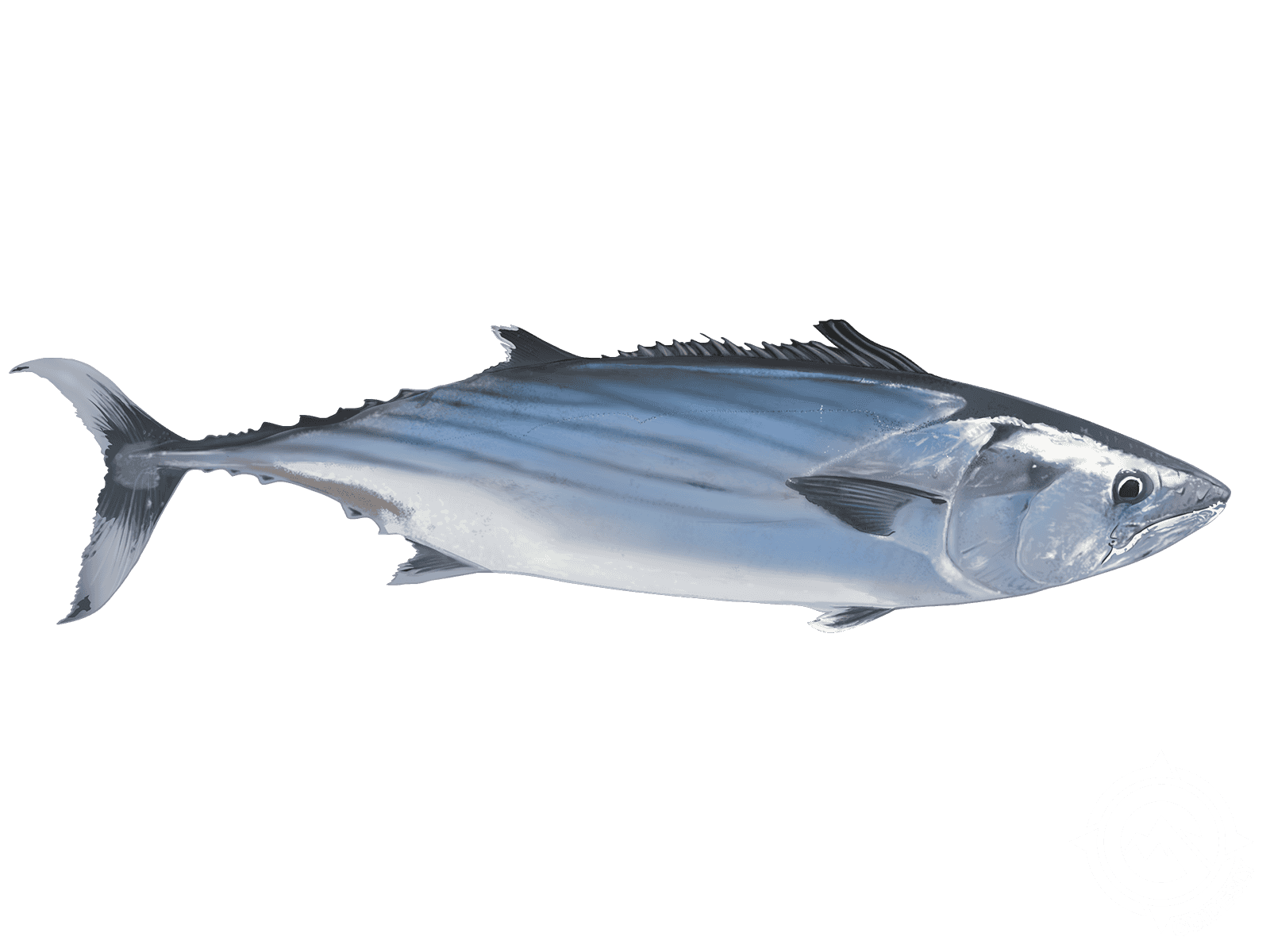Pacific Bonito

Species Details
Sarda Lineolata
Scombridae
Perciformes
Inshore, offshore
25 lbs.
40"
Pacific Bonito (Sarda lineolata) Fish Description
The Pacific Bonito fish, also known under several names such as the striped tuna, little tuna, bonefish, flasher, magneto, micronito (small bonito), and even in the past the “poor man’s tuna”
Though it is not highly known as food fish, it is a game fighter fish.
Likened to its other names, the Pacific Bonito fish is tuna-shaped, elongated and pointed at both ends. It is of a dark blue-violet color above and metallic silver on its underside, with several sloping lines on its back. Its entire body is scaled and they have no teeth on the vomer. Their first dorsal fin is adjoined with their second dorsal fin, and it's longer than its head. They have a series of six to eight finlets on their slender second dorsal surface towards their anal fin.
Diet & Size
The main diet of the Pacific Bonito is fish and squid. The maximum known length of the Pacific Bonito is around 40 in. and weighing around 25 lbs.
Interesting Facts about Pacific Bonito
- Pacific Bonito fish are sometimes dried, to be fermented, and smoked to create bonito flakes, or Katsuobushi, well-known in Japanese cuisine!
- Some Pacific Bonito fish have a preference for living in small schools, and others in larger groups. However the case, they all have high amounts of activity and swim constantly in search of prey to fulfil their seemingly endless appetite!
- Many of the Pacific Bonito species live near the surface of the water and gather in schools intimately linked with seagulls.
- The Pacific Bonito are the only tuna-like fish in California to have a number of dark, slanted stripes along its back.
- Pacific Bonito do not always successfully spawn every year, but generally when they do, it takes place farther down south, from late January until May. Their free floating eggs take around 3 days before they hatch.
Fishing Techniques
The Pacific Bonito fish are allowed to be caught all year round. However, the best times to land them are from June-November.
Though they are most often caught by purse seine fishing, a method that uses a fishing net, or a seine, to be hung vertically in the water with the bottom edge held down by weights and its top edge kept afloat using floats. The Pacific Bonito can also be caught by gill nets, trawling, surface trolling, casting, jigging, and hook and line.
They are known to be migratory, schooling, and pelagic fishes that feed on smaller pelagic fishes or squid near the surface as well.
When fishing for Pacific Bonito using the hook and line method, there is no shortage of bait and lures you can use for them as their diet consists of fish and squid. And that they are insatiable eaters, which make them amazing game fish for anglers, as with most epipelagic fish, as they put up a fight and capable of running if you aren’t too careful!
The most preferable bait for the Pacific Bonito is live anchovies or small sardines either on a sliding leader or cast-a-bubble.
As for lures, the finest lure for the Pacific Bonito would be a bonito feather alongside a cast-a-bubble, or any other float to keep the commotion on the surface that would draw in the fish and keeping the lure near the top, but these days a variety of spoons have proven themselves to be effective as well.
Habitat and Distribution
The Pacific Bonito can be found just about anywhere and often travel in schools of fish. They can be observed from inshore to around 100 miles offshore, even up to the recorded depth of 361 ft. from northern Vancouver Island to Mexico. They can also enter bays, most notably those in the more warm temperature water outlets.







